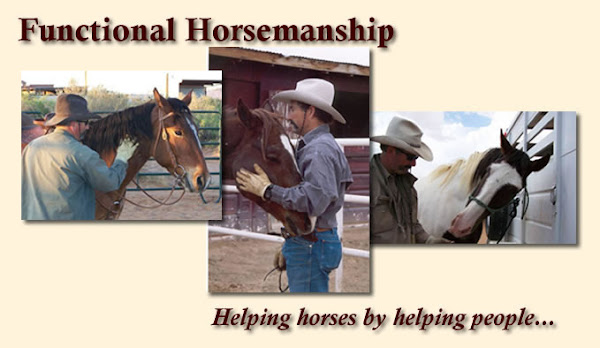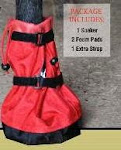I received an e-mail from a lady asking what my opinion were on Bitless Bridles, such as Dr Cook's Bitless bridle. It seems she bought a older mare who had a previous severe cut on her tongue so riding in a bit on this horse wasn't an option for her. She has also tried a side pull - I'm assuming a version without the snaffle bit, but was looking for a better option for her horse. If anyone reading this has some experience with or opinions on Dr. Cooks Bitless Bridle, then please drop a comment in the comment box underneath this post.
My reply was that I understood her reluctance to use a bit in her mare. I have a gelding in the same boat and I'll never put a bit in his mouth again. I am not against bit's, but for the most part I use a rawhide Hackamore, and sometimes a hackamore with a soft or hard rope bosal. While there are thousands of really good horsemen out there who find use in all sorts of bits, from snaffles to spades, I don't think I'll ever get to the point to competently use any bit but other than a snaffle or broken bit with short shanks. Better chance of keeping me honest that way I reckon.
I actually prefer to start a horse on a hackamore as opposed to a snaffle bit. For me it makes more sense as it is much closer to the halter. The disadvantage with a hackamore/bosal is that the reins connect under the jaw so the pull on a direct rein is something you need to be patient with to let the horse understand and develop that lateral flexion. On a direct rein you are actually pulling the bosal into his nose on the opposite side of his head/face suggesting that the horse turn in the direction of the pull to gain a release from the pressure. Because the reins of a hackamore connect to (just above) the heel knot of the bosal under the jaw, sometimes the horse will tip his head (less desirable) rather than turn or rotate it at the poll, which is more desirable as it positions the horse in a more balanced position for a turn.
 Dr. Cook advertises that his bitless bridle pushes rather than pulls, because the direct rein runs underneath the jaw and connects to the opposite cheek. Well, the way I see it, it is still a pull, like the Bosal or a side pull. A possible advantage with the Bitless Bridle is that the pull is higher up on the cheek and may tend to turn the head as opposed to tipping the nose which positions the horse for a better turn.
Dr. Cook advertises that his bitless bridle pushes rather than pulls, because the direct rein runs underneath the jaw and connects to the opposite cheek. Well, the way I see it, it is still a pull, like the Bosal or a side pull. A possible advantage with the Bitless Bridle is that the pull is higher up on the cheek and may tend to turn the head as opposed to tipping the nose which positions the horse for a better turn. At right is a picture of the Bitless Bridle. The reins are connected to the ring on straps that run underneath the jaw. These straps run through a fixed ring on the side of the nose band.
When pressure is applied to that rein, it tightens the strap running underneath the jaw, running up the opposite cheek and then over the poll. In theory this provides a clear signal, but again I haven't ridden using this Bitless Bridle, but I don't think I would have a big problem having any of my horses' accept it as they have been ridden in bosals and understand lateral flexion when asked through a direct rein. that's However, I'm interested in comments from those who have ridden the Bitless Bridle.
It is interesting to go to Dr. Cook's website, again it's here, and read about the Bitless Bridle. I don't agree which his assertion that bits and bosals operate off of pain. They certainly can when misused. But I think there is a difference between pain and pressure.
I do have a question, maybe a concern, about Dr. Cooks Bitless Bridle. When using a bit or a hackamore, the horse has the option of lateral or vertical flexion to move away from the pressure. I think that's the point as that's how we get our horses to bend or flex in reaction to that cue. When using the Bitless Bridle and pressure is applied with the reins, it is transmitted to the whole head. When the rider is using both reins to apply pressure, such as for a stop, back or to get the horse to collect,...I wonder if some horses would feel trapped or locked down as they cannot move to get a release and are more dependent upon the rider to provide the release, which may not happen in a timely fashion.
I think that if a horse works well in a side pull, then the transition to a Bitless Bridle, should go okay, as long as the horse is eased into it. It will be a different pressure than the horse is used to, so I might start real soft, reward her smallest effort and build from there.

















